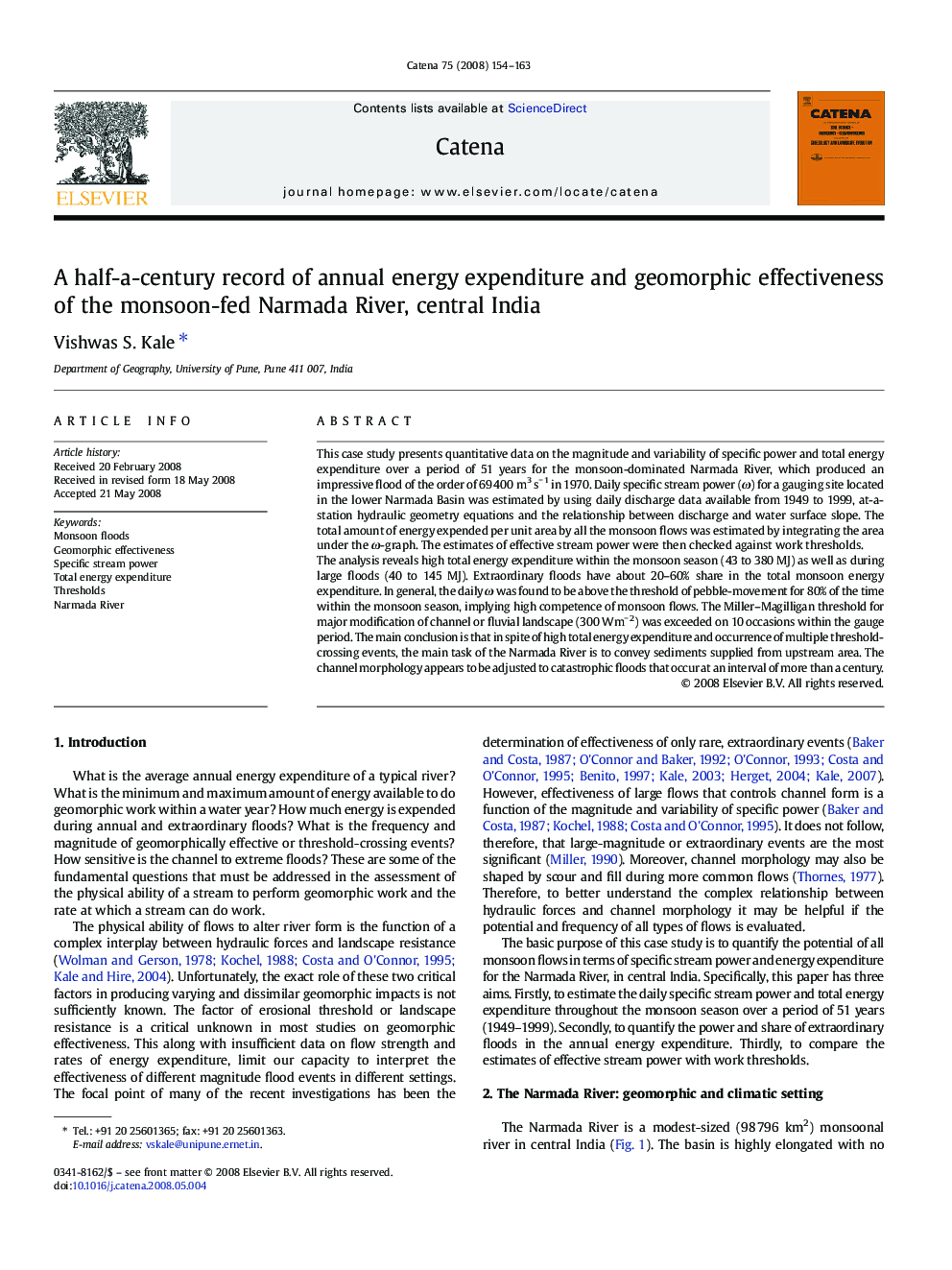| کد مقاله | کد نشریه | سال انتشار | مقاله انگلیسی | نسخه تمام متن |
|---|---|---|---|---|
| 4572359 | 1332171 | 2008 | 10 صفحه PDF | دانلود رایگان |

This case study presents quantitative data on the magnitude and variability of specific power and total energy expenditure over a period of 51 years for the monsoon-dominated Narmada River, which produced an impressive flood of the order of 69 400 m3 s− 1 in 1970. Daily specific stream power (ω) for a gauging site located in the lower Narmada Basin was estimated by using daily discharge data available from 1949 to 1999, at-a-station hydraulic geometry equations and the relationship between discharge and water surface slope. The total amount of energy expended per unit area by all the monsoon flows was estimated by integrating the area under the ω-graph. The estimates of effective stream power were then checked against work thresholds.The analysis reveals high total energy expenditure within the monsoon season (43 to 380 MJ) as well as during large floods (40 to 145 MJ). Extraordinary floods have about 20–60% share in the total monsoon energy expenditure. In general, the daily ω was found to be above the threshold of pebble-movement for 80% of the time within the monsoon season, implying high competence of monsoon flows. The Miller–Magilligan threshold for major modification of channel or fluvial landscape (300 Wm− 2) was exceeded on 10 occasions within the gauge period. The main conclusion is that in spite of high total energy expenditure and occurrence of multiple threshold-crossing events, the main task of the Narmada River is to convey sediments supplied from upstream area. The channel morphology appears to be adjusted to catastrophic floods that occur at an interval of more than a century.
Journal: CATENA - Volume 75, Issue 2, 15 October 2008, Pages 154–163